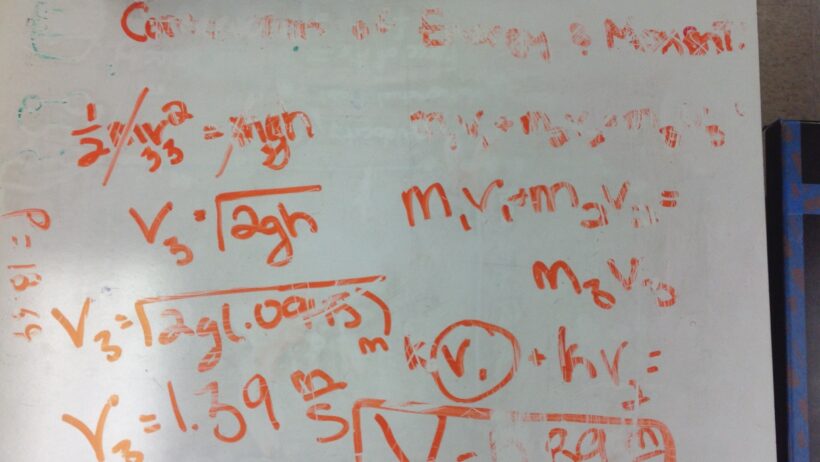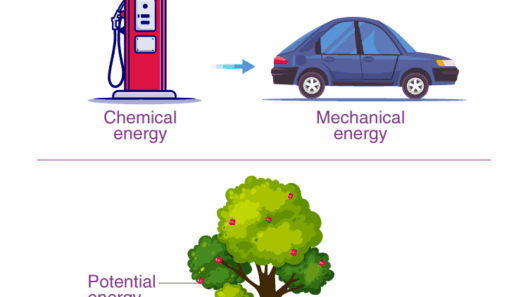The ballistic pendulum is a captivating apparatus that epitomizes the interplay between dynamics and conservation laws in physics. At first glance, it may appear simply as a mechanical contraption, but delve deeper, and one uncovers a rich tapestry of principles governing energy conservation, momentum, and the fascinating relationship between potential and kinetic energy. This treatment aims to unravel the intricacies of the ballistic pendulum, illuminating how this device conserves energy and seamlessly transitioning between different forms of energy.
To comprehend the conservation of energy within the context of a ballistic pendulum, it is essential to first grasp its foundational components. The ballistic pendulum consists of a freely swinging pendulum bob, which is typically affixed to a rigid support, capable of swinging horizontally and vertically when impacted by an object, such as a projectile. Upon collision, the projectile transfers its momentum to the pendulum bob, initiating a chain reaction that exemplifies the principles of conservation of momentum and energy.
At the crux of the model lies the law of conservation of momentum, which states that in a closed system, the total momentum before and after an event remains constant. When a projectile strikes the pendulum bob, the system’s momentum is conserved, provided external forces (like air resistance) are negligible. One can observe this phenomenon vividly: as the projectile embeds itself into the bob, the two bodies coalesce momentarily, moving as one through their subsequent arch. The momentum exchange during this instantaneous collision is pivotal to understanding energy conservation.
Before the collision, the projectile possesses kinetic energy, denoted by the equation KE = ½ mv², where m is the mass and v is the velocity of the projectile. The pendulum bob, at rest, holds no kinetic energy. Upon impact, the projectile’s kinetic energy is partially transferred to the pendulum bob, transforming into a different dynamic state. The energy is not lost; rather, it morphs between kinetic energy and potential energy. This transformation is governed by the conservation of energy principle, which asserts that energy can neither be created nor destroyed—only transformed from one form to another.
As the pendulum bob begins its ascent after the collision, the kinetic energy imparted from the projectile converts into potential energy, mathematically represented by PE = mgh, where h is the height gained by the bob. The trajectory taken by the pendulum bob as it swings upward is fascinating; as it climbs to its apex, the velocity decreases, and so does the kinetic energy, while potential energy increases correspondingly. The pendulum’s apex signifies a momentary cessation of motion; it is at this juncture where all kinetic energy has been fully converted into potential energy.
Yet, the narrative does not conclude here. Upon descending from its zenith, the pendulum experiences a transformation once again. Potential energy metamorphoses back into kinetic energy as gravity exerts its relentless pull. This cyclical motion exemplifies not only energy conversion but also the elegant dance of forces and energy within our physical world. Thus, the energy conservation exhibited by the ballistic pendulum serves as a microcosm for much larger environmental principles—much like the natural systems that govern our climate.
When addressing climate change, the lessons derived from the ballistic pendulum extend beyond traditional physics. Energy conservation principles parallel the sophisticated ways in which ecosystems conserve energy and materials. In natural systems, the conservation of energy manifests in nutrient cycles and energy transfer among trophic levels. Understanding these cycles can incite a paradigm shift in how we view sustainability and resource management. Just as energy transforms and transitions within the ballistic pendulum, so too must our approach to environmental stewardship transition into a holistic, integrated model of conservation.
The ballistic pendulum also presents an opportunity to engage with experimental physics, inspiring curiosity in learners and educators alike. Experimentation with the ballistic pendulum allows for hands-on opportunities to observe energy transformation and conservation principles in real-time. By adjusting variables such as the mass of the projectile or the pendulum bob, learners can manipulate outcomes, fostering a deep understanding of energy dynamics. Such interactive learning experiences can ignite interest in physics and environmental science, stimulating broader discourse about energy conservation in our day-to-day lives and its implications for the climate crisis.
Moreover, this apparatus can serve as a profound analog for real-world phenomena. In today’s society, energy production and consumption play an integral role in global warming. The conservation of energy principles elucidated by the ballistic pendulum can be transposed into the broader context of renewable energy sources. Wind, solar, and hydroelectric power systems harness natural energy flows akin to the pendulum’s energy transformations. As the world accelerates towards renewable technologies, understanding the foundational principles of energy conservation—exemplified by dynamic models such as the ballistic pendulum—becomes increasingly pertinent.
In conclusion, the ballistic pendulum is much more than an academic exercise; it is a window into the profound relationship between energy conservation and climate science. By studying how energy is conserved and transformed in this seemingly simple apparatus, we can cultivate a renewed sense of curiosity about the physical laws that govern our universe. Moreover, as budding environmentalists, understanding these principles can foster an appreciation for how intricately connected we are to the natural world and drive home the necessity for sustainable practices. Both physics and action converge here, promising a future where our understanding of energy can lead to solutions for climate change, inspiring a paradigm shift in how we interact with the world around us.








